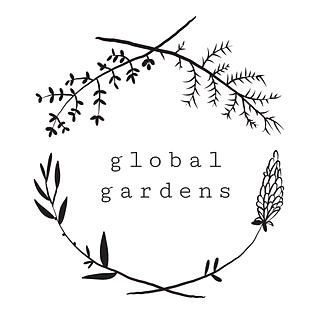EDICULTURE #5
- Global Gardens
- Jun 20, 2022
- 3 min read
Updated: Feb 24, 2023
The fifth Ediculture session was all about nutrition. According to the edible culture year.,this theme is located in the West - the point that peaks around the full moon in September and harvest time. It is all about getting the most out of what we grow and sharing it.
The session began with a reflection on how healthy soils support healthy food and, in turn, support our own health. As we sat around the fire, we considered key components of a healthy diet. This includes not only fresh fruits and vegetables but also pulses and whole grains. We focussed on the undervalued and often overlooked spelt whole grain to explore the versatility of whole grains.
Whole grains
A whole grain is any grain that contains the germ, endosperm and bran of a grain. This contrasts with refined grains which tend to have the germ and bran removed. Whole grains contain a much higher range of vitamins and minerals as well as protein and fat than refined grains. For example, whole wheat flour, contains B vitamins, iron, calcium, folate and riboflavin. This is perhaps one reason why bread was traditionally described as the 'staff of life'. Other whole grains include spelt, rye, oats, barley, maize, millet and rice. Whilst whole grains are higher in nutrition, they have a much shorter shelf life and some suggest that it is optimum to consume them freshly milled.
As we toasted spelt whole grains on the open fire producing a delicious nutty aroma. Stephen explained how roasted grain is a traditional delicacy in Tibet, Tsampa. Once the grains were golden, we ground them into flour in a vitamix grinder. We then shaped some simple chappatis made from an overnight fermented spelt flour sourdough mix prepared earlier and put them on the fire. They had a rich, nutty flavour as well as aroma, stimulating our appetite as a starter! Stephen had also pre-soaked some spelt whole grains which we then boiled over the fire in a casserole dish which could be eaten like rice.
Sourdough cultures
Sourdough is a transformative process that involves the fermentation of flour by specific lactic acid bacteria and wild yeasts. It is thought that sourdough bread originate from the Fertile Crescent many millennia ago. Key to sourdough is the preparation of a "sourdough starter" - a live culture that consists of a mixture of flour and water inoculated with wild yeast and lactic acid bacteria. This is then added to more flour to kick start the fermentation of the flour and create the leaven which becomes the "sour dough". Given warm, moist conditions wild yeasts and lactic acid bacteria thrive, giving off carbon dioxide which in turn make the dough rise. This process is one of the reasons why some people find sourdough bread easier to digest than unfermented breads. But watch out! Some places sell bread claiming it is sourdough but that is not because it also has baker's yeast. This has led to the Real Bread Campaign which is working to ensure distinction between authentic sourdough bread. Find out more here.
Harvesting from the Garden
Ready for the next course, we moved on to harvest ingredients for our lunch in the Coed kitchen garden, including onions, kale, salad, courgettes and herbs. Stephen also shared with us a squash harvested last autumn. Squash have a remarkable storing capacity and can provide a good source of nourishment through the hunger gap. After harvesting, we all worked on preparing a meal together. We made a roasted courgette salad with chives, sauteed greens and roasted squash.
As we enjoyed our collective meal, we shared food memories. Ranging from harvesting tomatoes and cucumbers to harvesting blackberries these memories connected us to a time and place as well as people. We reflected on the connections that can be brought about through sharing food.
To conclude, we spoke a little bit about how to preserve foods. Ideas included: pickling, fermenting and jamming and Stephen introduced us to an apple cider vinegar 'mother' gave us a little sample of his apple cider vinegar.
With huge thanks to the National Lottery Community Fund in Wales for making this workshop possible.






















Comments